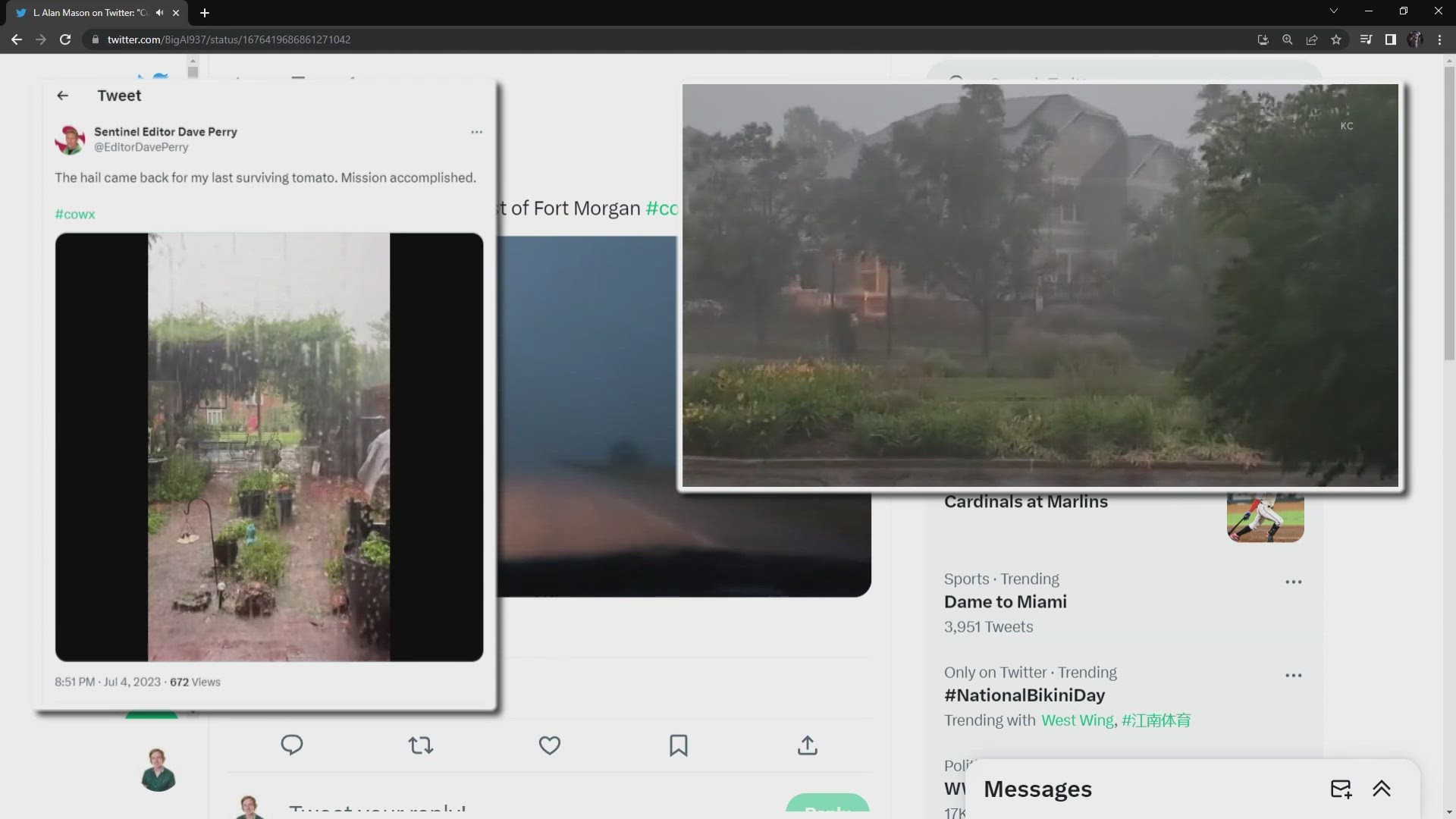BOULDER, Colo. — At 8:13 p.m. Tuesday – just as severe weather lashed parts of the Denver area – the National Weather Service office in Boulder posted a message on Twitter saying it was having trouble keeping up with the storms.
The reason? Twitter – where CEO Elon Musk had announced days earlier that non-paying customers, like the weather service’s Boulder office, would be limited to seeing 600 tweets a day.
“Due to issues with Twitter rate limits, we are unable to access most tweets at this time,” the weather service's message said before urging people to send their observations through “our other social media accounts or direct through our email/phone lines.”
“Twitter has become that place that we go to for breaking news,” said Dr. Samuel Jay, a professor of communication studies at Metropolitan State University of Denver. “I think over the course of its life span – which is 15-plus years, I think we are now – that it definitely kind of filled that niche for consumers.”
And for organizations that report the news or, in the case of the weather service, try to keep people apprised of developments in real time.
It also was another volley aimed at Musk in his ongoing effort to monetize Twitter. First, he started charging for the blue checkmark that goes along with being a verified account. Now people and organizations who won’t pay it can’t read – or tweet – as much.
Officials at the Boulder weather service office declined to comment Wednesday, referring calls to the national office.
A spokesman there declined to make someone available to answer questions but said in an e-mailed statement, “Twitter's new post viewing limits serve as a reminder for people to have multiple ways of receiving weather warnings. Social media is considered to be supplemental to official sources of weather forecasts, watches and warnings, available at weather.gov.”
A request for comment sent to Twitter was answered with the company’s customary response to reporters: A poop emoji.
Jay, who is the director of faculty affairs at MSU Denver, said the move to limit those who have agreed to pay for Twitter is one more in a long list of things that have alienated people since Musk took over the company.
“Twitter's floundering. It is,” Jay said. “I think that eventually somebody will come up with an alternative to Twitter that will force Twitter's hand in a good way – or bad way. But this continues to turn folks off. And I think it's really interesting, because in specifically the politics of it, Elon Musk is turning folks off on both sides of the aisle. And while there are some of those more-conservative social media outlets that have attempted to rise, they're not finding the success of Twitter.”
The weather service is just one agency that’s come to rely on the firsthand reports that appear on Twitter. Other agencies are looking at other options.
Flaviano Graciano with the Denver Office of Emergency Management said Twitter is only one of the social media platforms the agency uses – the others are Facebook and NextDoor. In addition, he said OEM relies on wireless emergency alerts, reverse notification alerts and the Emergency Alert System.
In the wake of pushback, Musk announced that he would be raising the limits – first to 800 tweets a day for non-paying users, then to 1,000.
SUGGESTED VIDEOS: Latest from 9NEWS

